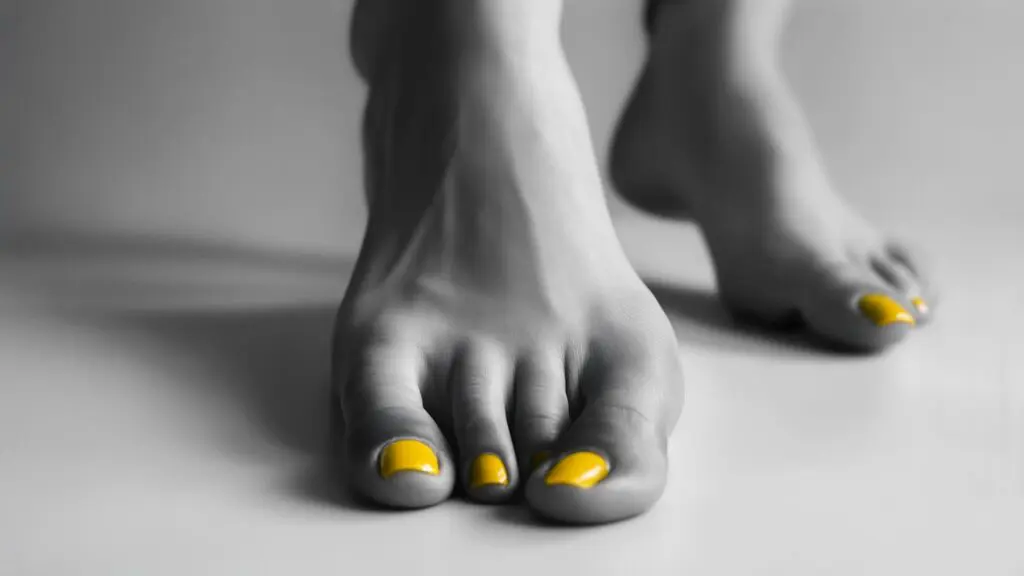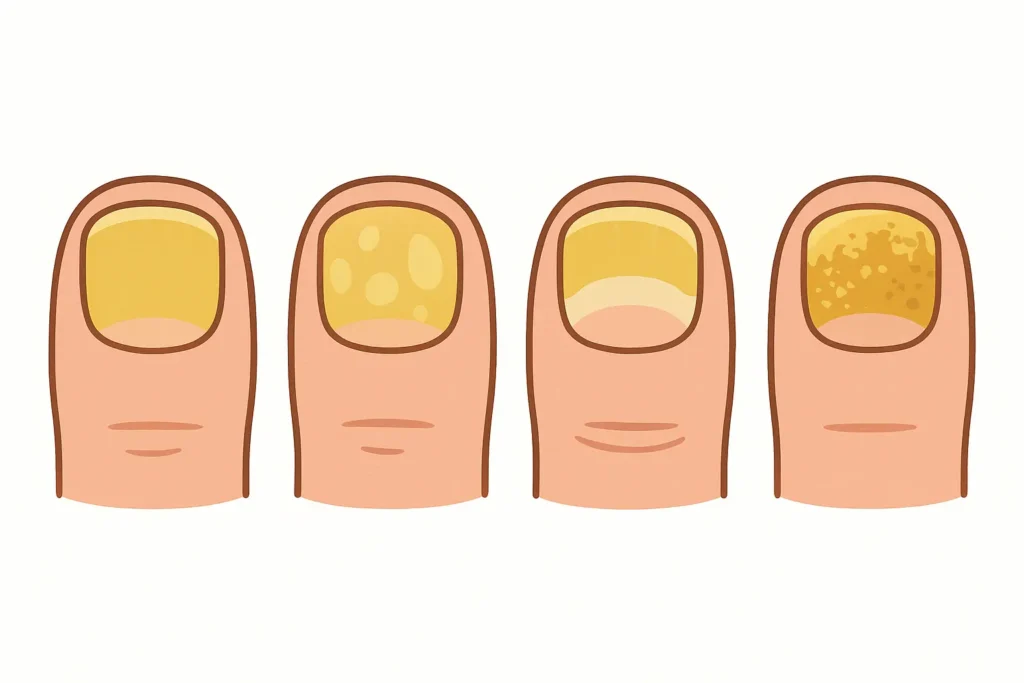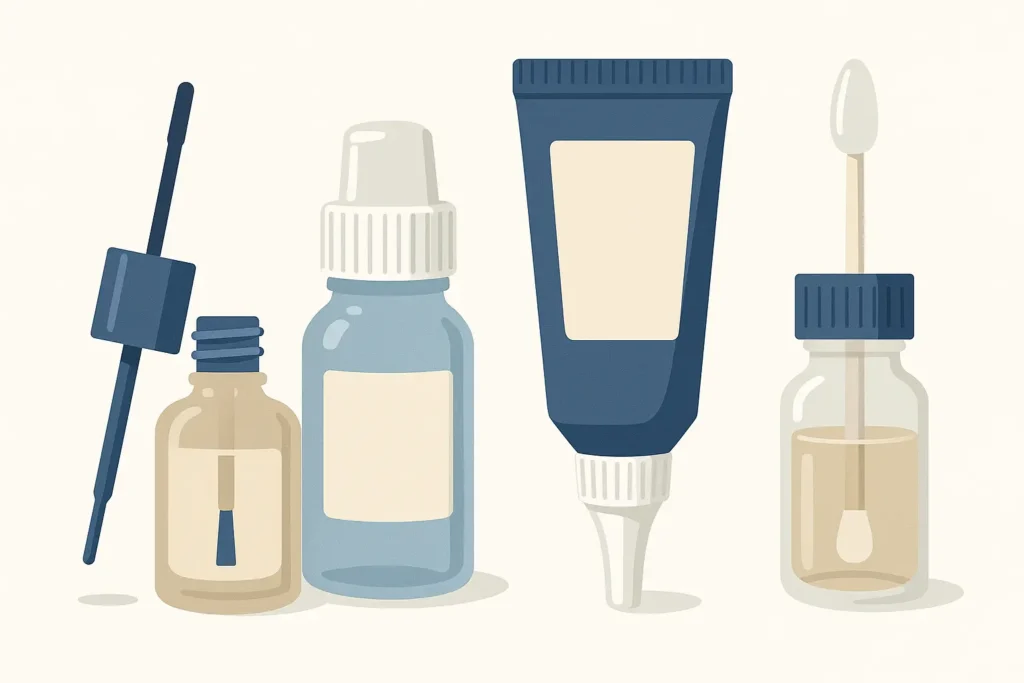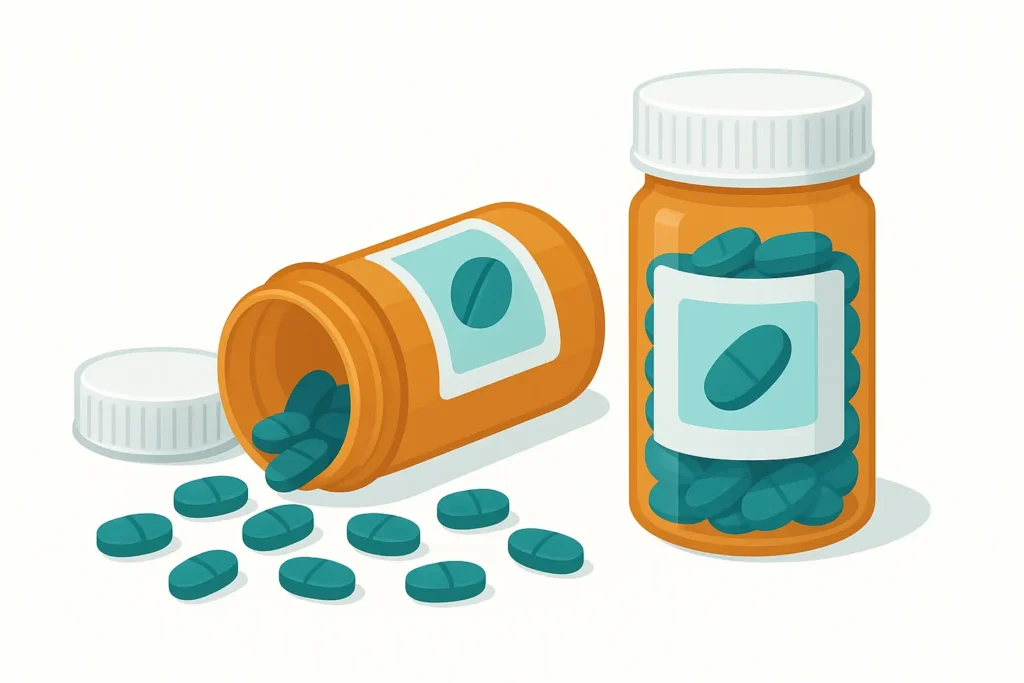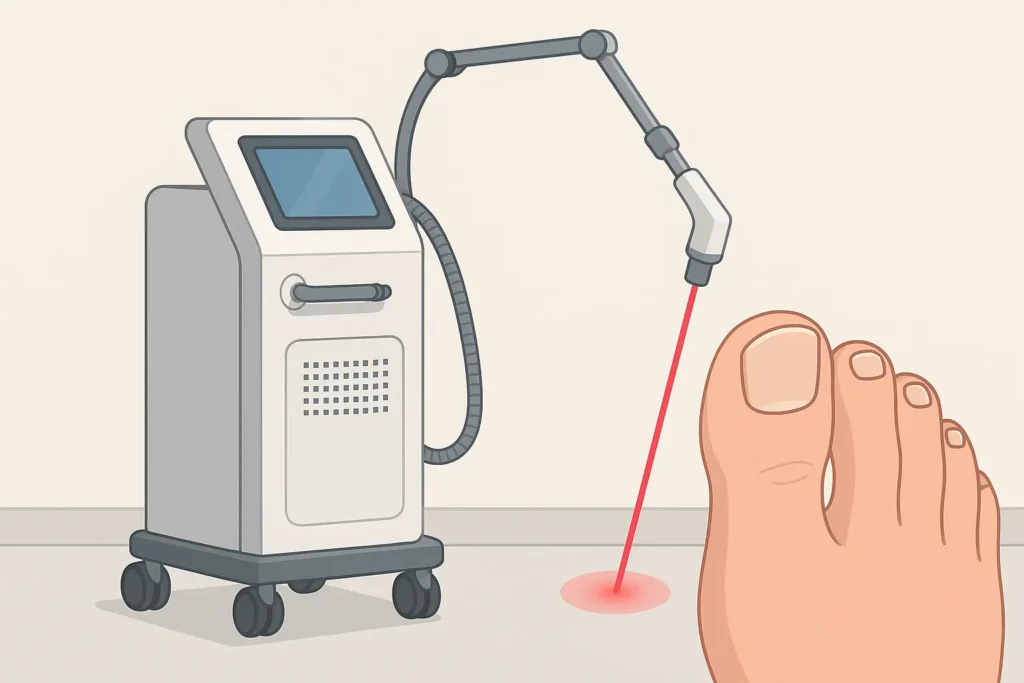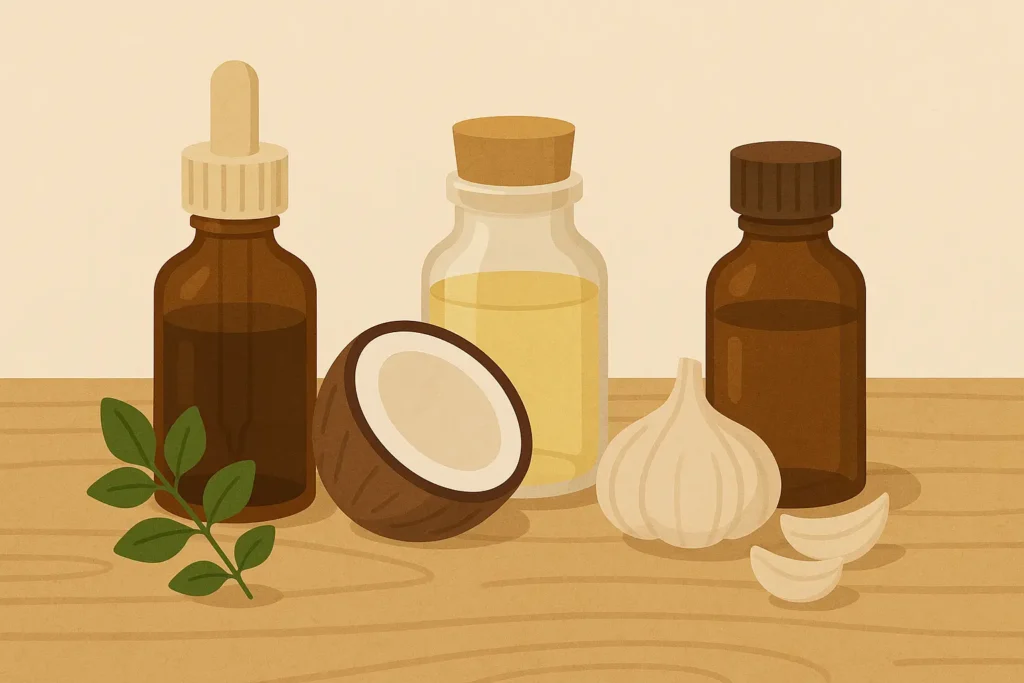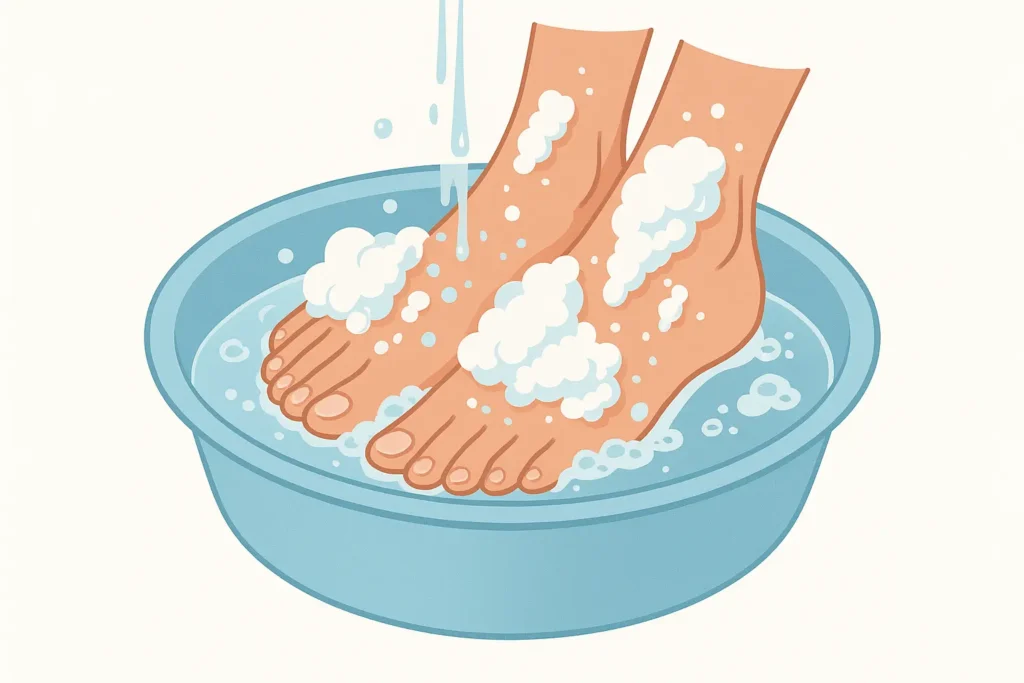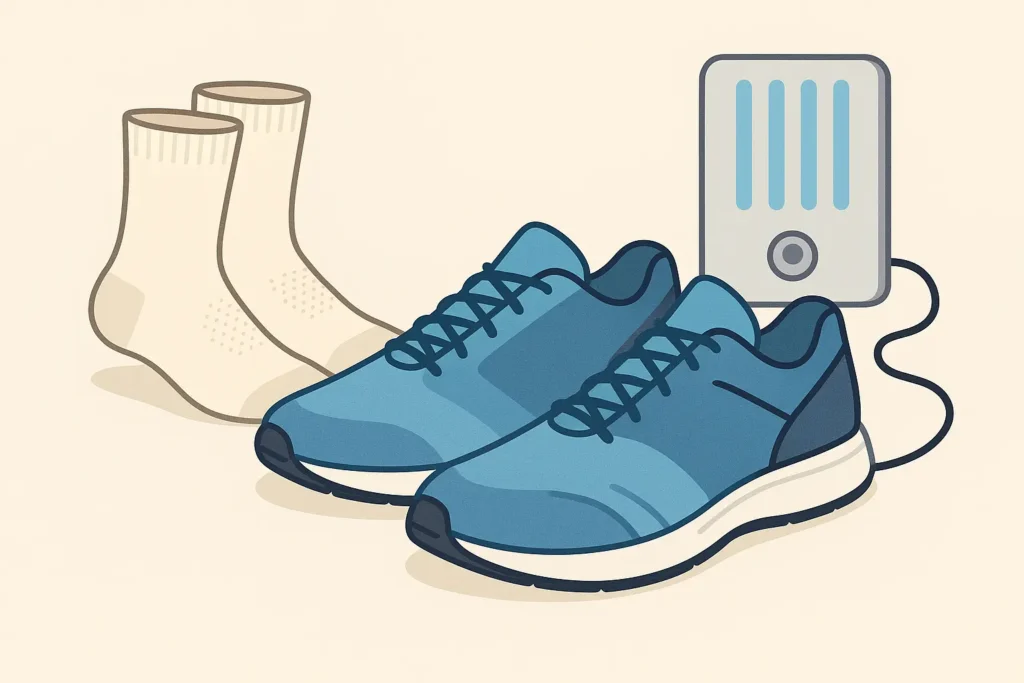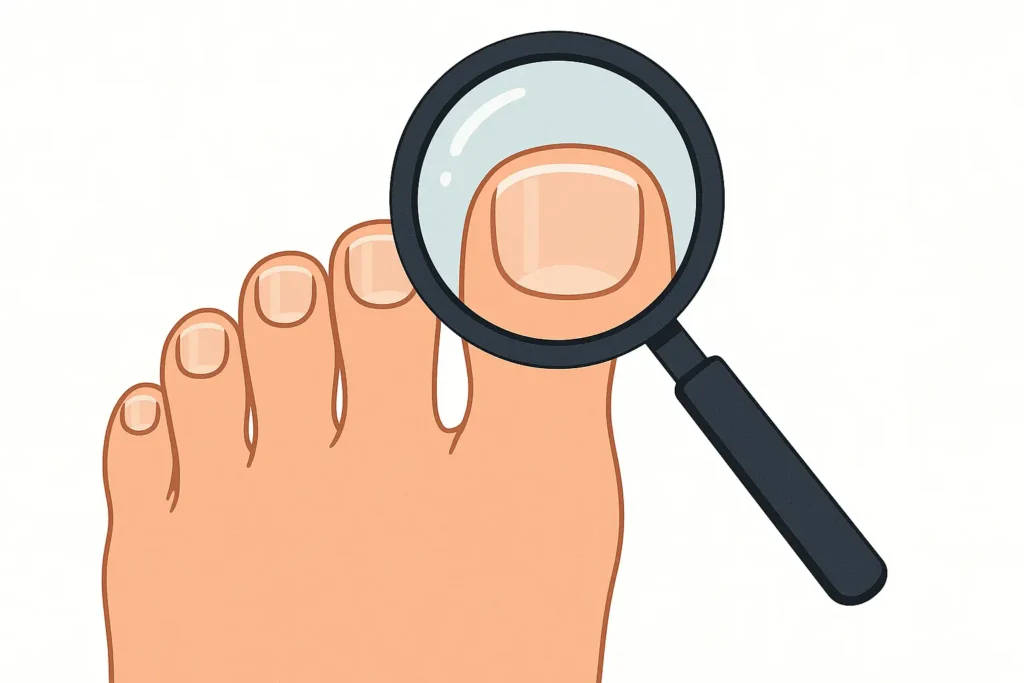Ever looked down at your toenails and thought, “When did they turn that color?” You’re not alone. Yellow toenails are way more common than people talk about, and honestly, they can be pretty concerning when you don’t know what’s causing them.
I remember when my friend Sarah panicked over her yellowing big toe – turned out it was just from that dark red polish she’d worn all summer. But for my neighbor Tom, it was actually a fungal infection that needed real treatment. The tricky part? They can look pretty similar at first glance.
Quick Resources:
Yellow nail syndrome affects more than 100 documented cases worldwide, with most occurring in adults over 50 years of age, according to the National Organization for Rare Disorders. But before you panic, most yellow toenails aren’t this rare condition – they’re usually something much more treatable.
Get instant expert guidance on nail and beauty concerns with our Free 24/7 Wedding Hotline
Here’s the thing: yellow toenails aren’t just a cosmetic issue. They can signal underlying health problems ranging from simple fungal infections to more serious conditions that need medical attention. Whether you’re dealing with a stubborn infection or just want to prevent problems in the first place, understanding your options can save you months of frustration.
Plan every detail of your wedding beauty routine seamlessly with our AI Wedding Planner
What’s Really Causing Your Yellow Toenails?
Fungal infections are the culprit about 85-90% of the time, but they’re definitely not the only reason your nails might look off. I’ve seen people panic over yellow toenails that turned out to be nothing more than nail polish staining, while others dismissed serious infections that needed immediate attention.
Diabetes can cause nail discoloration due to poor circulation and increased infection risk. Chronic leg swelling also contributes to yellow nail development. Certain medications, particularly those used for rheumatoid arthritis treatment, have been linked to yellow nail syndrome. Even something as simple as nail polish can stain nails yellow, though this usually grows out over several months.
Most of the time, you’re looking at a fungal infection if your nails are thick, brittle, and that distinctive yellow-brown color. But if multiple nails are turning yellow at once, or you’re having breathing problems or unusual leg swelling, that’s when you need to see a doctor right away.
When to Worry vs. When to Wait
You shouldn’t ignore yellow toenails that stick around for more than three months. Pain, swelling, or signs of infection around the nail definitely need medical attention.
Not sure what to do next? Chat now with our Free 24/7 Wedding Hotline for quick advice
Here’s what I tell people: if it’s just one nail and you recently dropped something on it or wore dark polish for months, give it time to grow out. But if you’re seeing multiple nails change color, or if you have diabetes or circulation problems, don’t wait around.
Sarah, a 45-year-old teacher, noticed her big toenail turning yellow after wearing closed-toe shoes all summer. When three more toenails developed similar discoloration over two months, she finally saw a doctor. Turns out it was a fungal infection that needed prescription treatment – catching it early meant 6 months of treatment instead of 12.
Treatment Options That Actually Work
Let’s be real about what works and what doesn’t. I’m going to break this down by how serious your situation is, not by fancy medical categories.
For Mild Cases: Start Here
1. Over-the-Counter Antifungal Creams
Your pharmacy has plenty of options with undecylenic acid or tolnaftate. They work best for early-stage infections, but you’ll need to stick with them for 3-6 months minimum. Don’t give up after a few weeks – that’s when most people quit and wonder why nothing works.
2. Tea Tree Oil
This isn’t going to cure a serious infection, but it can help alongside other treatments. Apply twice daily with a cotton swab, but definitely dilute it or you’ll burn your skin. Give it at least 6 months to see any real results.
3. Vicks VapoRub
I know it sounds weird, but the thymol and eucalyptus oil actually have antifungal properties. Apply it nightly to clean, dry nails. It’s cheap, it’s available everywhere, and while the research is limited, plenty of people swear by it.
4. Apple Cider Vinegar Soaks
Create an acidic environment that fungi hate by soaking your feet for 20 minutes daily in diluted apple cider vinegar. This works better for prevention than cure, and it can be drying, so moisturize afterward.
For Stubborn Cases: Prescription Topicals
5. Prescription Creams (Penlac, Jublia, Kerydin)
Your doctor might prescribe stronger creams that work better than drugstore versions. They have about a 15-20% complete cure rate, but many people see significant improvement even without total clearance. You’ll need 6-12 months of daily application, and patience is absolutely key.
6. Nail Debridement
This is when your podiatrist removes the infected nail material so treatments can actually reach the infection. It sounds scary, but it’s quick and makes topical treatments way more effective.
For Serious Infections: Oral Medications
7. Terbinafine (Lamisil)
If your doctor suggests this, don’t panic about taking pills for a nail problem. This medication actually works really well – about 7 out of 10 people see their nails completely clear up. You’ll take it for 12 weeks, and yes, you’ll need blood tests to make sure your liver stays happy, but most people handle it just fine.
8. Itraconazole (Sporanox)
This uses “pulse therapy” – one week of treatment per month for 3-4 months. It’s great if you can’t take terbinafine, but your doctor will need to check for drug interactions since this one doesn’t play well with other medications.
9. Fluconazole (Diflucan)
Weekly dosing for 6-12 months makes this convenient, though it’s not quite as effective as terbinafine. The success rates are lower, but it has fewer drug interactions.
Mark, a 52-year-old construction worker, struggled with yellow toenails for two years using only topical treatments. After starting a 12-week course of terbinafine, his nails completely cleared by month 6 post-treatment. The key was finishing the full course even though he saw improvement at week 8.
Use our AI Wedding Planner to organize your pre-wedding health and beauty care timeline
High-Tech Options: Professional Procedures
10. Laser Therapy
FDA-approved lasers target fungal infections using specific wavelengths. You’ll need 3-6 sessions spaced weeks apart. Success rates vary from 30-70%, but the big advantage is no side effects or drug interactions. Some people feel mild discomfort during treatment, but it’s generally well-tolerated.
11. Photodynamic Therapy (PDT)
This combines light therapy with special solutions that make fungal cells more vulnerable. It’s promising but still limited in availability, and insurance coverage varies widely.
12. Nail Removal (Partial or Complete)
Reserved for severe cases that don’t respond to anything else. It sounds drastic, but when other treatments have failed, removing infected nail portions allows direct treatment of the nail bed. New nail growth typically starts within weeks.
Natural Remedies: Worth Trying Alongside Real Treatment
Look, I’m all for natural approaches, but let’s be honest about what they can and can’t do. These work best when combined with proven treatments, not as standalone solutions.
13. Oregano Oil
The carvacrol in oregano oil has real antifungal properties, but you must dilute it properly or you’ll irritate your skin. Apply twice daily after mixing with a carrier oil. The smell is strong but fades quickly.
14. Coconut Oil
The lauric acid offers gentle antifungal benefits while moisturizing. This is excellent when combined with other treatments since it helps prevent the dryness that often comes with antifungal medications.
15. Garlic Extract
Fresh garlic contains allicin, which has documented antifungal properties. Crush fresh garlic and apply the extract topically. Fair warning: it smells terrible and can irritate skin, so test a small area first.
16. Essential Oil Blends
Combinations of lavender, thyme, and lemongrass create pleasant-smelling therapeutic blends. Always dilute properly with carrier oils. These make daily application more enjoyable than pharmaceutical alternatives.
17. Probiotics
Supporting your immune system can help prevent recurring infections. Oral supplements combined with topical applications work best as complementary treatments, especially if you’re prone to repeat infections.
18. Hydrogen Peroxide
The antiseptic properties work against bacteria and fungi. Apply with a dropper or create soaking solutions. This can be quite drying, so follow up with moisturizer.
Jennifer, a yoga instructor, combined oregano oil (diluted 1:10 with coconut oil) with her prescribed topical antifungal. After 4 months of twice-daily application, her yellow toenails showed significant improvement, and the natural oils prevented the dryness she experienced with medication alone.
Prevention: Your Best Defense
Honestly, prevention beats treatment every single time. I’ve watched people spend hundreds of dollars and months fighting infections that could have been avoided with simple daily habits.
19. Keep Your Feet Clean and Dry
Daily washing with antifungal soap, thorough drying (especially between toes), and regular nail trimming prevent debris buildup that harbors infections. Keep nails short and straight-cut to avoid ingrown nails.
20. Smart Shoe and Sock Choices
UV shoe sanitizers or antifungal sprays eliminate fungal spores in footwear. Rotate shoes daily so they can dry completely between wears. Moisture-wicking, antimicrobial socks create an environment fungi hate. Change socks immediately if they get damp from sweat.
21. Protect Yourself in Public
Shower shoes in gyms, pools, and locker rooms aren’t optional – these places are breeding grounds for nail infections. Don’t walk barefoot where moisture accumulates.
22. Support Your Immune System
Balanced nutrition, adequate sleep, and regular exercise strengthen your body’s natural defenses. Managing conditions like diabetes helps prevent complications that lead to nail problems.
23. Stay Vigilant
Monthly nail inspections catch problems before they become severe. Look for changes in color, texture, or thickness. Professional foot care is especially important if you have diabetes or circulation issues.
David, a gym enthusiast, prevented reinfection after successful treatment by UV sanitizing his shoes weekly, wearing moisture-wicking socks, using shower shoes, and applying antifungal powder daily. Eighteen months later, his nails remained healthy despite regular gym exposure.
Get expert tips and beauty care reminders with our Free 24/7 Wedding Hotline
24. Environmental Control
Proper ventilation reduces humidity levels that promote fungal growth. Don’t share nail clippers or files – fungi can spread through contaminated tools.
25. Long-term Maintenance
Continue preventive measures after successful treatment. Many people get lazy once their nails look better, but reinfection is common without ongoing prevention.
What Actually Works: The Real Numbers
Here’s the honest breakdown of success rates:
– Prescription pills: 70-80% success (but you need blood tests)
– Prescription creams: 15-20% success (safer, slower)
– Laser therapy: 30-70% success (expensive, no guarantees)
– Home remedies: 5-15% success (worth trying alongside real treatment)
Timeline Reality Check
Fair warning: nail treatments are slow. We’re talking months, not weeks. Topical treatments need 6-12 months minimum. Oral medications work faster but still require 3+ months to see full results. Professional procedures vary, but don’t expect overnight miracles.
Pro tip: Take before photos so you can actually see progress. Nails grow slowly, and it’s easy to get discouraged when you can’t remember how bad they looked initially.
Bottom Line
Yellow toenails usually aren’t serious, but they’re annoying and won’t fix themselves. Start with gentler treatments if you want, but don’t waste years being stubborn about seeing a doctor if things aren’t improving.
Most fungal infections respond well to treatment when you stick with it long enough. The key is consistency and realistic expectations. Prevention remains your best defense – good foot hygiene, proper footwear choices, and staying alert for early signs of trouble will serve you well long after your current treatment ends.
Don’t hesitate to seek professional medical advice when yellow toenails persist or worsen. Early intervention often leads to better outcomes, and your feet deserve better than years of dealing with infected, uncomfortable nails.
Simplify every step of your wedding beauty prep with our AI Wedding Planner
1-800-BRIDESMAID
The Newlywed
Card Game
something extra to love
Read the weekly newsletter from Bridesmaid for Hire, 1-800-Bridesmaid, to hear about real stories, from strangers, who need advice on love, life, friendship, and so much more.
Looking for the perfect wedding gift for someone you adore? Grab The Newlywed Card Game. It's a fun and interactive game they can play on their honeymoon or future date nights.
